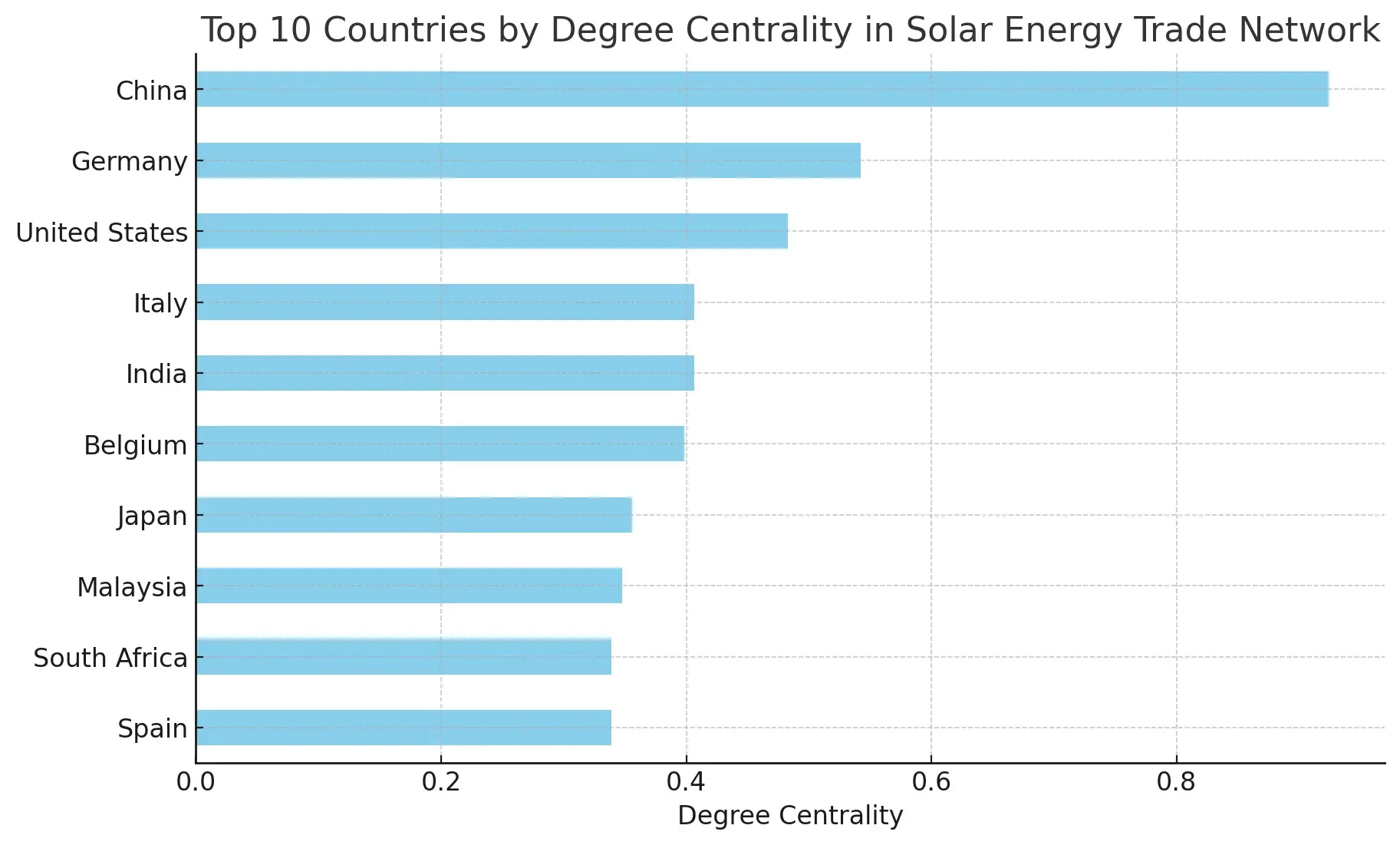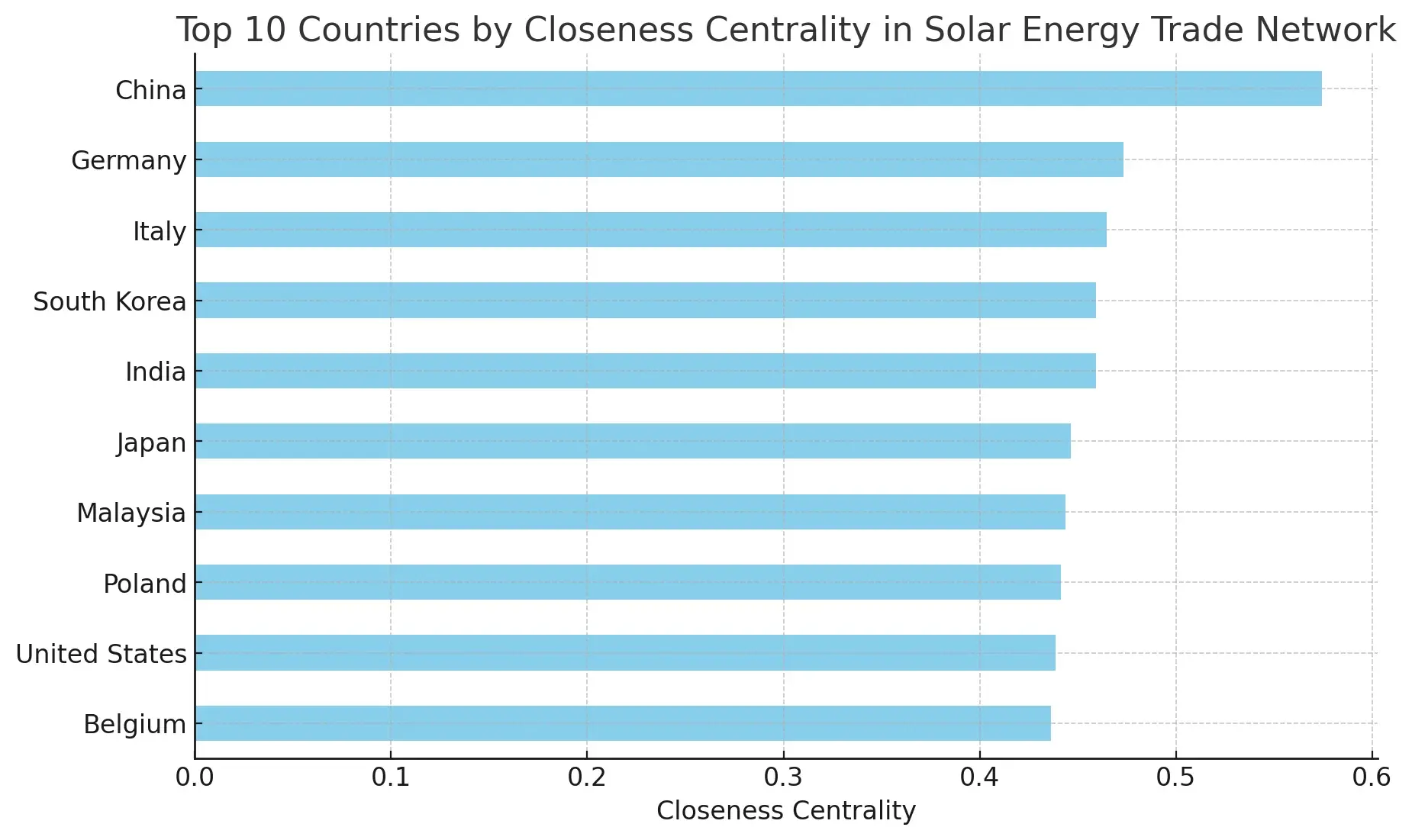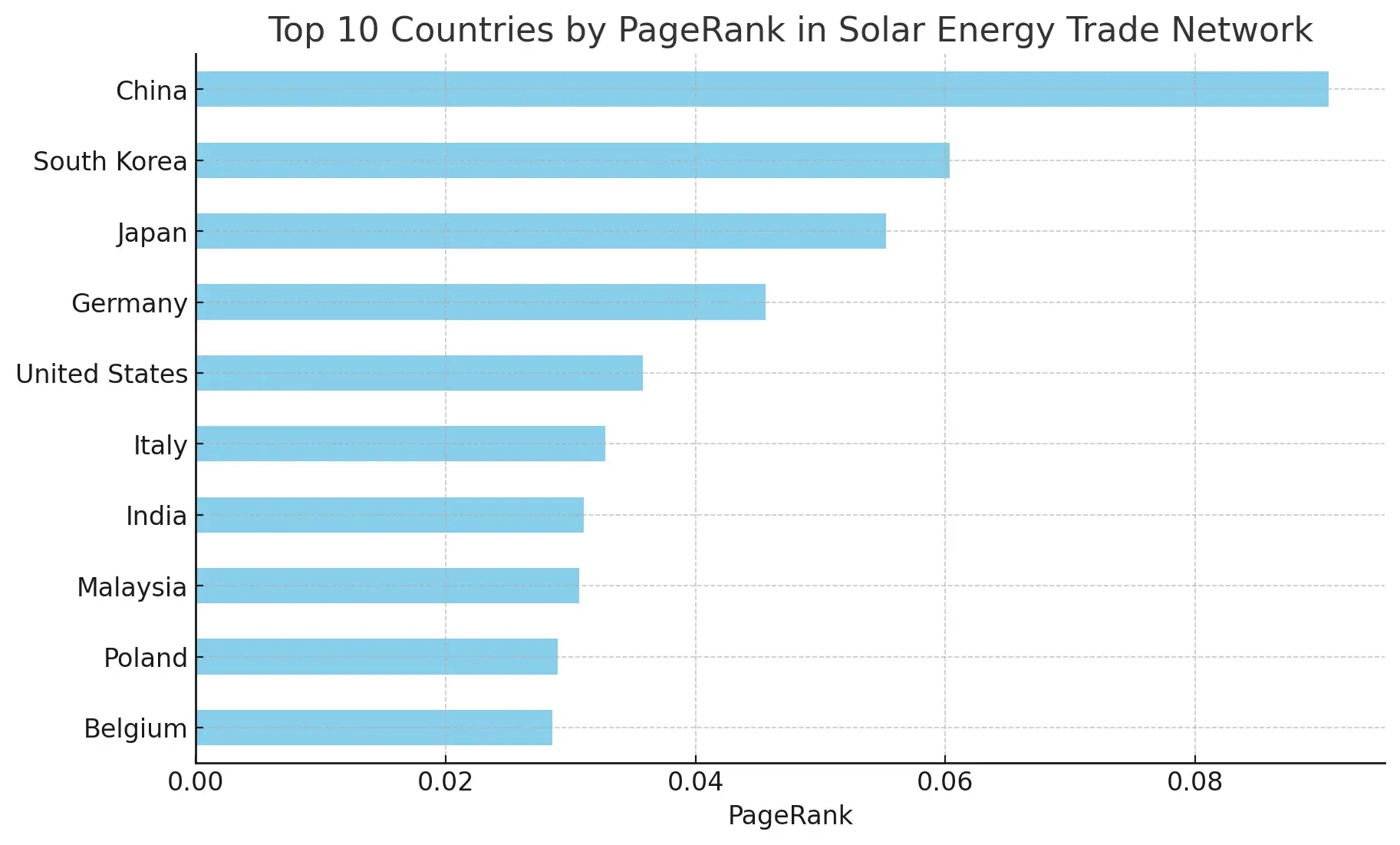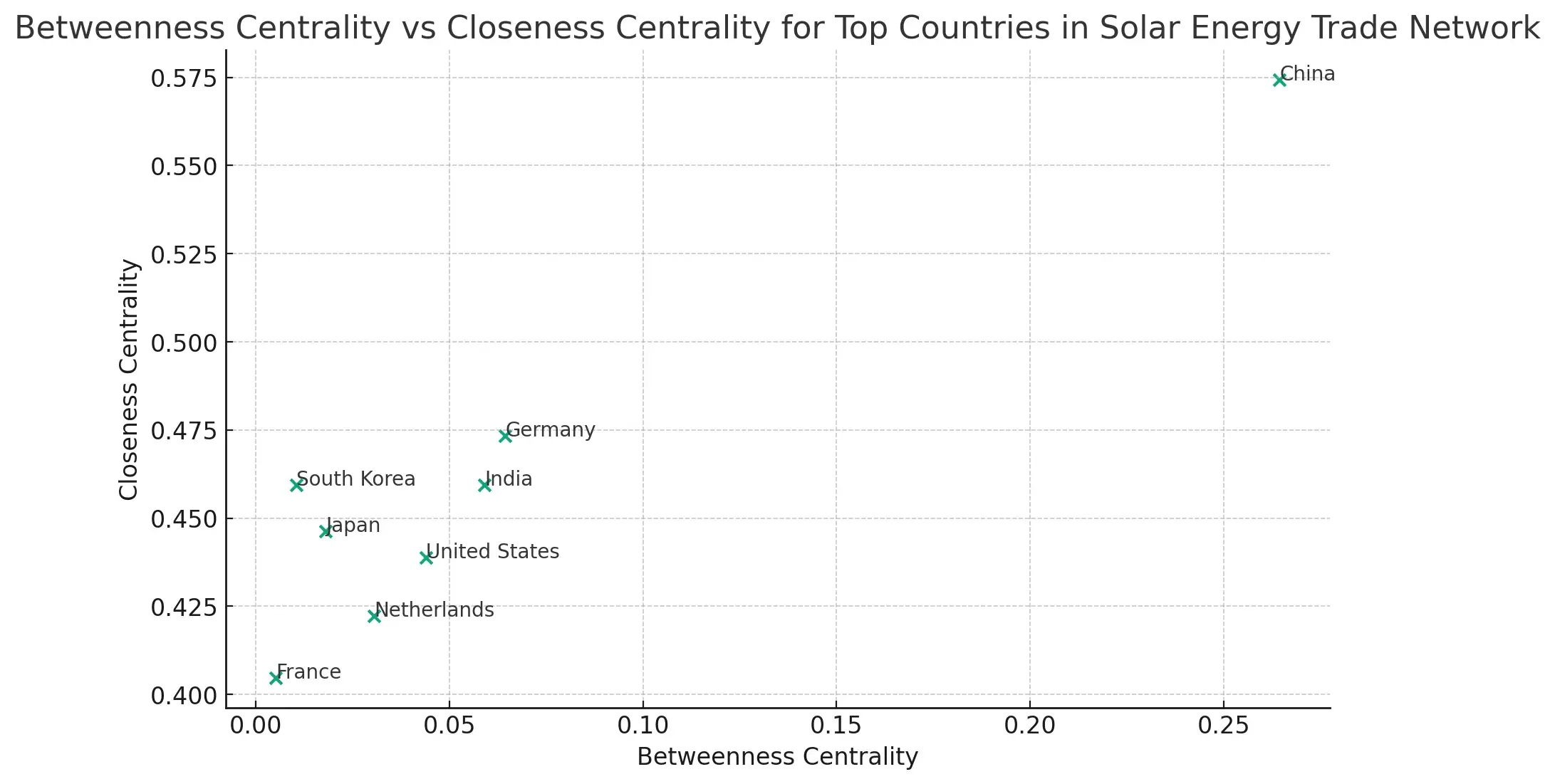Storm on the Sun: China's Solar Flare Dominates An Emerging Technology
Four key metrics—Degree Centrality, Betweenness Centrality, Closeness Centrality, and PageRank—offer valuable insights into network robustness. China consistently ranks at the top across all these metrics within the solar energy sector. How can we better understand and anticipate the impact of that dominance?
Four key metrics—Degree Centrality, Betweenness Centrality, Closeness Centrality, and PageRank—offer valuable insights into network robustness. China consistently ranks at the top across all these metrics within the solar energy sector. How can we better understand and anticipate the impact of that dominance?
Degree Centrality: This measures how many trade connections a country has in the critical components that make solar energy possible. A high Degree Centrality means lots of trading partners with high-value direct imports or exports. China leads all nations in direct trade relationships with a score of 0.92, significantly higher than Germany's 0.54. China's direct trade connections are so vast they go beyond influence and border on defining the solar sector altogether.

Betweenness Centrality: This measures how often a country appears on the shortest trade path between two other countries. If it's high, then a country plays a significant role in the flow of solar products. In other words, Betweenness Centrality gauges a country's role as a 'bridge' in the network. Here, China, with a score of 0.26, outstrips Germany's 0.06 by more than four-fold. China is the vital conduit for trade flows, connecting numerous countries through its trade network.

Closeness Centrality measures how quickly a country can reach all other countries in the network. A high score means China can access other markets rapidly, which is good for spreading solar technology. With a score of 0.57, China is better positioned than Germany (0.47) to quickly reach other countries, enabling it to respond swiftly to shifts in demand or supply.

Finally, PageRank is a measure used initially by Google to rank web pages. In our context, it measures the importance of China in the solar energy trade network. A high PageRank means China is not only connected to many countries but also to the most important competing countries. China's score of 0.09 is about twice as high as Germany's 0.04. Again this “solar flare” from China influences all the big players in the sector.

This dominance underscores China's pivotal role in the solar energy sector and its impact on the global supply chain. For instance, China's high Degree Centrality is partly due to its diverse range of exports, from silicon to quartz to diodes, which is integral to producing solar panels.
Harnessing Sunbeams: The Power Player Role of Diodes in Solar Energy
Diodes are unsung heroes in the solar energy sector. These devices act like valves forcing current to flow in one direction, from solar cell to battery. Without diodes, power loss would be unavoidable because on cloudy days or at night, stored electricity would flow out of the battery and back to the solar panels. Diodes are key to the “electrical plumbing” that makes storage of solar energy possible.
Diodes also protect solar panels from being damaged by "hot spots." These areas heat up when a part of the panel is in the shade while the rest is in sunlight. Hot spots can reduce a panel's life or even destroy it. By carefully managing the current flow, diodes can keep solar panels functioning smoothly.
Using company-level data from the OEC, we see that the supply chain for diodes is highly connected. The main countries involved in the supply chain are China, Vietnam, Indonesia, Spain, and Cambodia. Highly connected nodes are also potential points of failure in the supply chain. The network rests heavily on Yantian, Ningpo, and Shanghai ports, where more than two-thirds of Diodes are shipped to the United States. A disruption in these countries or ports could significantly affect the overall supply chain.
The Degree Centrality measure shows that the most connected nodes in this network are Guangzhou Five Six Technology Co, PT Honoris Industrial, and Perfect Display Technology Company, making them critical players in the supply chain for this product to the United States. If these companies face disruption, it could significantly affect the overall network due to their high connectivity.
So, next time you see a solar panel gleaming in the sun, remember the humble diode. It's not just about capturing sunlight – it's also about managing the power flow to get the most out of every sunbeam.
Unveiling the Dominance of China in the Solar Energy Trade Network
China's Solar Flare plays a central role that contributes to the network's robustness and presents potential vulnerabilities. Any disruptions in China's exports could have far-reaching effects on countries that rely on these materials.

China is a significant outlier, demonstrating high Betweenness and Closeness Centrality. China not only acts as a bridge in the network, connecting other countries, but it can also quickly interact with the rest of the network. The other countries,Germany, the United States, India, and France, show varying levels of Betweenness and Closeness Centrality, reflecting their different roles and positions within the solar energy trade network.
As we navigate the challenges of climate change and strive for a greener future, understanding these dynamics is crucial for policymakers and stakeholders. This will enable more resilient and diversified supply chains, mitigating potential disruptions and ensuring a steady transition toward renewable energy.
